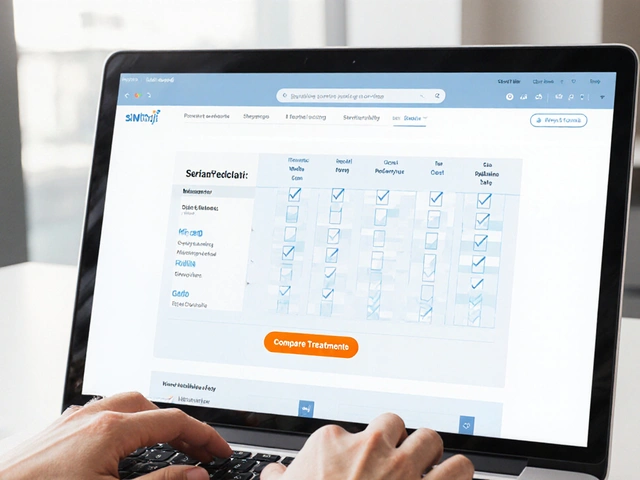Imagine finally holding your tiny newborn—exhausted but amazed—while worrying about how many days you can stay home before the office starts messaging. That nagging in the back of your head about unpaid bills or returning to work early? You’re not alone. In 2024, the United States was still one of the few developed countries with no federally mandated paid maternity or paternity leave. Yep, you read that right. New parents in places like Sweden or Canada can count on several months (or more) with financial support, but a huge number of American moms and dads cobble together sick days, vacation, and whatever unpaid time off they can get, hoping it’ll be enough. All of this ends up shaping not just the first days with your baby, but your mental health, your finances, even the way you bond as a new family. So, before you assemble that crib or think about baby names, understanding leave policies is just as vital as picking the perfect stroller.
How Parental Leave Affects New Parents and Babies
Picturing those early days with a newborn brings up a mix of awe and chaos, but there’s a major piece many soon-to-be parents don’t consider until the pressure hits: how much time they can actually spend as a family before work calls them back. Paid parental leave—whether it’s maternity or paternity leave—has proven benefits, but only if you know how to access it and why it matters.
Let’s start with the science. Babies aren’t just cute; their brains are developing at warp speed in the first few months. Studies from Harvard’s Center on the Developing Child and the World Health Organization show that when parents—both mothers and fathers—can stay home for at least twelve weeks, their babies score better on health, social, and emotional measures. Breastfeeding, for one, becomes more likely and lasts longer when moms have paid leave; the CDC found that babies whose mothers had at least three months of paid time off were 30% more likely to be exclusively breastfed at six months. Dads matter just as much. A Stanford study tracked Scandinavian fathers who took paternity leave and found lasting boosts in father-child bonding, involvement in everyday care, and even long-term academic benefits for kids.
There’s a big mental health angle, too. No surprise: postpartum depression risk goes down when moms aren’t rushed back to work. A report in the journal Pediatrics even pointed out that each additional week of paid leave correlated directly with a lower risk of postpartum depression. Financial stress is real—the American Psychological Association’s 2023 survey called out the single biggest cause of anxiety for new parents: money worries sparked by lack of paid leave.
So, what happens when paid leave isn’t an option? Data from the Bureau of Labor Statistics in 2024 showed that only 27% of private-sector workers in the U.S. had access to paid family leave. Not surprisingly, uptake is lowest among lower-income workers—those who need it most. This has real consequences. Moms without paid time off return to work sooner and are more likely to cut breastfeeding short. Dads, meanwhile, often skip leave altogether. Those lost weeks aren’t just tough emotionally—they affect parent-child attachment, increase the risk of physical health setbacks, and can even ripple out years later in children’s academic and social lives.
It’s not all bad news. Some companies—think Netflix, Microsoft, and IKEA—have stepped up with progressive leave policies because the payoff is clear: better retention, happier employees, and lower turnover costs. But these are the exception, not the rule, in the U.S. Globally, over 120 countries offer some form of paid maternity leave, with many including paternity leave too. Estonia leads the world: 86 weeks for mothers, nearly half of it paid at 100%. In Japan, new dads can get up to a year paid—though culture often keeps many from using it fully.
This just shows that leave isn’t only about ‘vacation time’—it’s a survival tool that shapes more than just the first twelve weeks of a baby’s life. So, getting real about your options and advocating for what you need is a game changer for your whole family’s future.

Navigating Maternity and Paternity Leave Policies in 2025
If you’re thinking about family planning in 2025, the rules can feel like alphabet soup—FMLA, short-term disability, state leave laws, employer policies. Don’t stress, you just need a game plan. The Family Medical Leave Act, or FMLA, is the federal safety net. It’s been around since 1993, letting eligible employees (at companies with 50 or more workers) take up to 12 weeks of unpaid, job-protected leave. Sounds good, right? The kicker: it’s unpaid. And about 44% of workers aren’t even eligible—think small businesses, gig workers, or those who haven’t clocked a year yet.
A handful of states have stepped up. As of 2025, California, New York, New Jersey, Washington, Connecticut, Oregon, Massachusetts, Rhode Island, and Colorado all have paid family leave laws. Exactly how much you get, how long, and how it’s paid out depends on where you live. In California, you’re looking at up to eight weeks of paid leave at roughly 60-70% of your wages, while Washington State offers up to 12 weeks. These states fund their programs using payroll taxes, so you don’t have to beg your boss—apply through the state system, just like unemployment. Tip: Every state has its own requirements—some count recent work hours; others want you to notify your employer in advance (usually 30 days).
Here’s a real headache for couples: figuring out how to coordinate leave so someone’s always home with the baby. Under FMLA and most state laws, parents can take leave at the same time or back-to-back (staggering is a smart move for extending home coverage). But most private companies have their own playbook. Some roll out paid leave for both moms and dads—Spotify offers 24 weeks, Walmart provides six weeks of paid parental leave to eligible employees, but only for full-time workers. Always check your benefits booklet or HR portal—hidden gems or, occasionally, disappointing surprises pop up there.
If your workplace is in the “bare minimum” camp, you might need to look into short-term disability insurance (STD). This policy is often the only way new moms in the U.S. get some paid time off after childbirth. You typically get around 6 to 8 weeks at a partial wage, but it doesn’t include time off for dads—unless they buy separate family leave insurance plans.
So, what do you actually do? Start early. As soon as you start thinking “maybe baby,” find out if your workplace, or your state, has maternity leave or paternity benefits (if you don’t see clear info, ask directly—HR departments answer these questions all the time, and you aren’t the first to ask). Double check if you’re eligible for FMLA; if not, look up the laws in your state at PaidLeave.us or your state’s labor website. Then, run the numbers: what will your income look like if you take all your available leave? Work out a bare-bones and realistic budget—babies rarely stick to plans, but you’ll want at least a financial cushion in place.
If you’re self-employed or in a gig role, things get trickier. You can buy your own short-term disability insurance—several big insurers now offer policies for freelancers, but they need to be in place before pregnancy. In some states, contractors and the self-employed can opt in to a public paid leave plan. Do the paperwork early. Also, some platforms (like DoorDash and Uber) started offering partial family benefits to top performers in 2024, so it never hurts to check.
Remember, every workplace is different. Start with the basics: dig up your employee handbook, check your state’s family leave policy, and talk to other parents at work for tips. Don’t be shy about asking: plenty of companies don’t advertise their best family perks, and you might surprise yourself by what you find. Even if your current job falls short, you can always use what you learn to negotiate better leave if you take a new position—family time is a perk you can (and should) ask for up front in salary negotiations.

Financial Planning and Tips for Maximizing Family Leave
Alright, you’ve figured out what sort of time you can take, but now comes the part nobody loves to talk about: money, logistics, and actually prepping for new parent life. If the leave is unpaid or only partially paid, planning ahead is the only way to ease the stress—and trust me, your sleepless self will thank you later.
First off, create a family budget with actual numbers. List out your current take-home pay, then calculate exactly what happens when one (or both) parents are on reduced or unpaid leave. Don’t forget about health insurance premiums—if you’re getting paid less, you might owe more out of pocket each pay period. Use online calculators (like the one from the National Partnership for Women & Families) to test different scenarios. Sometimes, taking unpaid or partially paid leave for a few extra weeks ends up being worth it in the long run, especially when you consider the costs of infant daycare versus extra time at home.
Now, stash cash. The best tip from parents who’ve been there? Open a separate “leave fund” and set up automatic transfers from every paycheck, months before your due date. Even $25 a week adds up—over a year, that’s $1,300 you won’t miss until you need it. If family and friends ask about gifts, don’t be shy—tell them you’re saving for extended leave, rather than clothes the baby will outgrow in a month.
When it’s time to claim leave, nail down the paperwork early. Most state programs require plenty of documentation: proof of pregnancy, delivery paperwork, your work schedule, past pay stubs. If your employer needs notice, give it in writing—email works fine. Keep copies and track everything. If you hit snags, connect with a workers’ rights group (like A Better Balance or Legal Aid) or use state ombudsman lines. Sometimes state websites lag; pick up the phone and speak to a real person if your claim seems to stall.
Now, let’s talk about maximizing the leave itself. Splitting or staggering parental leave means one parent is home longer with the baby; this is especially smart if you can’t both take full time off together. Some parents tag-team: mom is home first, then dad uses his leave when she goes back, stretching care over four or five months. The other perk? Dads who take solo time with new babies often report stronger relationships—not just with the child, but with their partners. It’s worth every second if you can pull it off.
If your company is more generous, consider “topping up”—using vacation or sick days to extend your paid time. Just double check the paperwork, since some HR departments require you to use accrued days before you go on official leave. If you’re part of a union or trade, ask about additional protections—these are often better than non-union workplaces.
Have backup plans for flexible or part-time work options. More workplaces—especially post-pandemic—offer remote weeks or part-time schedules, so even a couple of transition days can mean a smoother return. If you can afford unpaid leave, consider working a compressed schedule: four longer days instead of five, for instance, keeps you home an extra day each week. Alternate family members, skilled friends, or certified postpartum doulas can fill in gaps if you absolutely must return to work sooner than planned.
On the wellness front, don’t forget about mental health. Schedule check-ins for yourself and your partner, even if it’s just a video chat with a counselor. Many employee assistance programs slide in free counseling sessions. Also, join new parent groups—local or online. If you’re worried about losing career momentum or missing projects, set up regular check-ins with your boss while you’re out (only if you want to). Many managers like to keep you in the loop, and it helps when you’re ready to come back.
Last practical tip? Track every conversation, every form, every payment. Keep a running file—hard copy or in Google Drive. When you’re sleep-deprived, organized notes are priceless for clearing up pay problems and nudging HR if anything slips through the cracks.
Planning for a baby isn’t just about cribs and cute blankets—it’s being smart about leave so you get real family time, fewer money headaches, and a better start for your newest family member. Whether your leave is paid, unpaid, or somewhere in between, each step you plan now makes those first months a whole lot more special and a lot less nerve-wracking.









8 Comments
Claire Mahony
May 7 2025When you look at the numbers, it’s clear that treating paid leave as an optional perk is a misstep that hurts families and businesses alike. The research shows longer maternity time translates into better infant health and lower long‑term costs for employers. If you’re weighing the trade‑off, remember that short‑term savings quickly disappear in higher turnover and absenteeism. A modest, structured policy is the smarter choice for everyone.
Andrea Jacobsen
May 8 2025I totally agree with the point about turnover; I’ve seen HR reports where companies with generous leave see retention rates climb by 12‑15 %. One practical tip is to map out the exact state benefits early, because many parents miss out on the partial wage replacement that California and Washington offer. Also, stacking vacation days on top of state leave can extend paid time without extra cost to the employer. It’s a win‑win when you coordinate the timelines well.
Andrew Irwin
May 9 2025That’s a balanced view, and it’s worth noting that flexibility matters as much as the duration of leave. Some families prefer a staggered approach so that one parent is always home, which smooths the transition back to work. Employers who allow part‑time return options also see morale boost without losing productivity. Keeping the conversation open helps everyone find a sustainable path.
Jen R
May 10 2025Honestly, most of the hype around paid leave ignores the fact that the real bottleneck is awareness, not legislation. If you skim the Department of Labor’s FAQ, you’ll find that many eligible workers never file for FMLA because the paperwork seems daunting. In practice, a quick call to your HR portal can clarify you’re covered, and the rest is just a matter of timing. It’s not rocket science, but it does require a proactive stance.
Joseph Kloss
May 11 2025Let’s step back and treat paid family leave as a social contract rather than a corporate perk, because the latter framing reduces it to a line item in the budget. When you examine the macro‑economic data, you see that nations with robust leave policies consistently rank higher on human development indices, which indirectly boosts GDP through a healthier workforce. The paradox is that short‑term cost‑cutting measures actually erode long‑term productivity by increasing stress‑related absenteeism and turnover churn. If you consider the neurodevelopmental impact, those first twelve weeks are a critical window where parental presence directly influences synaptic pruning and language acquisition. Studies from Harvard and Stanford make it clear that both mothers and fathers contribute to the child’s cognitive scaffolding, so leaving one parent out of the equation skews outcomes. Moreover, the financial strain of unpaid leave fuels anxiety disorders, a fact corroborated by the American Psychological Association’s recent surveys. From a toxic analyst’s perspective, the hidden liabilities of neglecting paid leave are massive – think legal battles, workers’ compensation claims, and the intangible brand damage when employees feel disposable. The casual legalese you read in policy documents masks a deeper ethical dilemma: do we value profit over people? If you’re a CEO who believes in sustainable growth, you’ll recognize that investing in families is a strategic advantage, not a charitable afterthought. The optics of offering six weeks of paid paternity leave versus none can swing public perception dramatically, especially in the age of social media activism. Yet many firms still cling to the myth that “the market will self‑correct,” ignoring the empirical evidence that market forces rarely internalize social welfare costs without regulatory nudges. It’s a classic case of externalities where the burden is shouldered by the next generation. In practice, layering state benefits with employer top‑ups creates a hybrid model that satisfies both fiscal prudence and employee well‑being. The key is transparency: clearly outline how the leave accrues, what the payout percentages are, and how it interacts with short‑term disability. Finally, the cultural narrative must shift from “taking time off is a luxury” to “taking time off is a responsibility we owe to our children and our society.”
Anna Cappelletti
May 12 2025I love how you framed the issue as a social contract; the argument is both logical and compassionate. Your point about externalities really resonates, and it’s something I’ve seen echoed in academic journals. If you’re looking for a concise way to present this to leadership, a one‑page executive summary with bullet points on ROI and employee health can be persuasive. Also, double‑check that the terminology stays consistent – “paid leave,” not “paid‑time‑off,” to avoid ambiguity. It’s encouraging to see a balanced view that bridges economics and empathy, and I think it will spark productive discussion.
Dylan Mitchell
May 13 2025OMG this is like the most epic fail in corporate policy ever.
Elle Trent
May 14 2025While the hyperbole is entertaining, the underlying data suggests that the “epic fail” narrative oversimplifies a multifaceted policy landscape. In practice, firms that adopt tiered leave structures leveraging state‑funded credits can mitigate cost exposure while delivering robust benefits. The jargon‑laden discourse often masks the fact that ROI calculations hinge on reduced turnover churn rates, which are quantifiable. A more nuanced critique would acknowledge both the fiscal constraints and the strategic advantage of a well‑designed leave program. Ultimately, aligning stakeholder incentives with employee well‑being produces sustainable competitive differentiation.